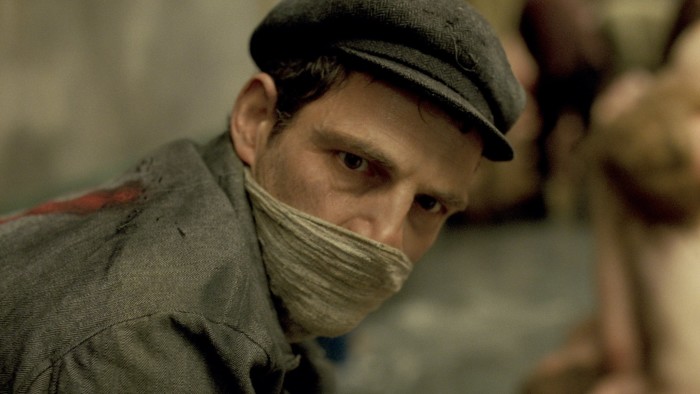Son of Saul — film review: ‘A triumph’

Simply sign up to the Life & Arts myFT Digest -- delivered directly to your inbox.
In interviews, the Hungarian director László Nemes has been clear about the purpose of his Oscar-winning debut Son of Saul. Borrowing the phrase James Cameron used for his sci-fi opus Avatar, Nemes has said he too wants to “immerse” the audience in his film. But his isn’t a fantasy: it is set in Auschwitz in October 1944.
You may already be scrolling down the page, making a sincere mental note to catch up with it one day. I couldn’t blame you. I can only say the film is, by its own measure, a triumph. Engineered with virtuoso skill, every moment screams You Are Here. And here is hell.
Our first sight of Saul is his back: an X daubed on his shirt. His surname completes the singling out: Ausländer, the German for stranger. A Hungarian Jew, Saul belongs to the Sonderkommando, the Jewish work units forced by the Nazis to assist in the mechanics of the death camps. They dispose of corpses, remove gold fillings, and so unthinkably on. “Deprived of even the solace of innocence,” Primo Levi wrote of them, perhaps the cruellest atrocity of all.
Then we see his face. From here, that is our default: the gaunt, stunned features of actor Géza Röhrig (more commonly a poet, here transcendent). Tightly framed, they are often the only thing in focus. Most of the film’s horrors take place out-of-shot, or in the background, heard more than seen. This is how we experience the first transport of prisoners: the racket of the train, the dogs, the voices promising hot soup after the showers. Saul’s task is to hasten the unwitting new arrivals into the gas chambers. Once the door is closed, he must wait outside, and listen.
But something like a miracle emerges: a young boy, still alive, just long enough to be smothered by a doctor. Soon, Saul reveals that this was his son. And here where the dead are called “pieces”, he absconds with the body, obsessed with giving the child a religious burial.
We too cling to this flailing act of humanity. And yet the gesture is complex, as we come to understand. An escape is planned by the other Sonderkommando. Not only does Saul barely register it — his mania gets in the way.
Similarly, despite the adulation the film has received, there have been objections: that it calls too much attention to its technique, that even its use of colour is dubious. (The sombre black-and-white of Schindler’s List was, of course, its own aesthetic choice.) Nemes should be pleased with the dissent. “Here there is no Why” — uttered by a guard to Levi — was the credo of Auschwitz. Divided opinions are their own kind of tribute to a film that demands Why in every frame.

Comments